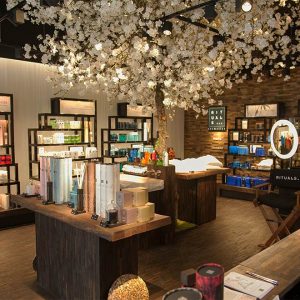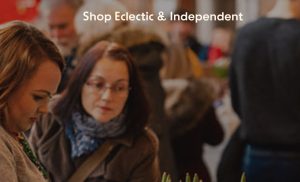Sweet success for Birmingham’s revolutionary confectionery brand

EVER had the desire to create your own sweet treats exactly the way you want them?
Well, you soon can as the world’s first ever 3D gummy printer is set to launch in eight shopping destinations across the UK – including the Merry Hill Centre in Dudley.
The company behind the idea is Magic Candy Factory, based at The Custard Factory in Digbeth. It specialises in producing customised confectionery suitable and is planning on taking its idea into Manchester, London and Birmingham’s Selfridges from January.
Each outlet will have one of the brand’s specially designed 3D printers as well as the company’s new concept, the Magic Mix and Make, which is a giftable pick and mix suitable for both vegans and vegetarians.
As well as candy messages and 3D shapes, the printers will offer customers the opportunity to create everything from cake decorations to edible greeting cards, all within less than five minutes.
Entrepreneur and founder of the Magic Candy Factory, Melissa Snover said: “The idea behind it is along the lines of science when executed to perfection is indistinguishable from magic.
“So we use a ton of science to make the product work but it works so well and so fast and it’s so fun that actually it’s like magic when it works.”
Originally from New York, Melissa has been living and working in Birmingham for 20 years in which time she also founded the free-from gummy sweet range, Goody Goodstuff which she later sold on to the owner of Chewitts, Cloetta.
It was after working with these mass-produced sweets that Melissa found herself frustrated by the lack of creativity involved with manufacturing and decided to take her interest in 3D printing further, starting a joint venture with Percy Pig producer, Katjes.
She added: “I sat down with Katjes and said what if we could make a printer that could make things on demand, unique for every customer?
“So now the customer can choose if they want to make an Octopus that’s blackcurrant flavour and sour, they can choose that and it will be exactly that. Or they might say no, today I want a raspberry butterfly and I want it to be glitter or I want a fizzy tropical blue dinosaur. It doesn’t matter, they can choose every time, whatever they want.”
Since launching less than a year ago, the company has designed their own printer, a selection of product recipes, a software programme which allows customers to design their own candy and has also launched kiosks across the globe including Dubai, Italy, France, Qatar and the United States.
Melissa said: “3D printing is super hard to use; you need to be able to code and you need to be able to 3D design, so if you can’t do those things, you can’t use a 3D printer at the moment.
“So the Magic Candy Factory’s goal is to bring customised confectionery but also to take this amazing 3D printing technology and make it easy and usable and enjoyable for anybody.
“So a three year old kid with grandma and grandpa can engage and design something and use a 3D printer and watch something come to life in five minutes. We’re bridging the gap between this technology and the mass market and that’s something that I’m really proud of.”
To test the concept in time for the UK launches, the Magic Candy Factory used their The Custard Factory site to experiment with ideas and gain feedback from families and local schools.
“You can test something in an online environment or a hypothetical environment, but until you get it into a real retail environment and actually get consumers in there and see what happens, you don’t know exactly what will happen.
“It taught us a lot about how to manage a very busy environment like a shopping centre, so we optimised the concept a lot, adding a queuing system, a little thing that tells people how long they have to wait and letting people pre-order on a tablet. Things like that that we never would’ve thought about if we hadn’t tested it.”
With the company experiencing rapid growth, Melissa is confident there will be a Katjes’ Magic Candy Factory in 1,000 shopping destinations across the globe in the next three years.
It isn’t just shopping centres; there is also interest from amusement parks, events and travel businesses.
“Our biggest issue at the moment will be that we can’t build infrastructure fast enough to substantiate the growth,” she added.











